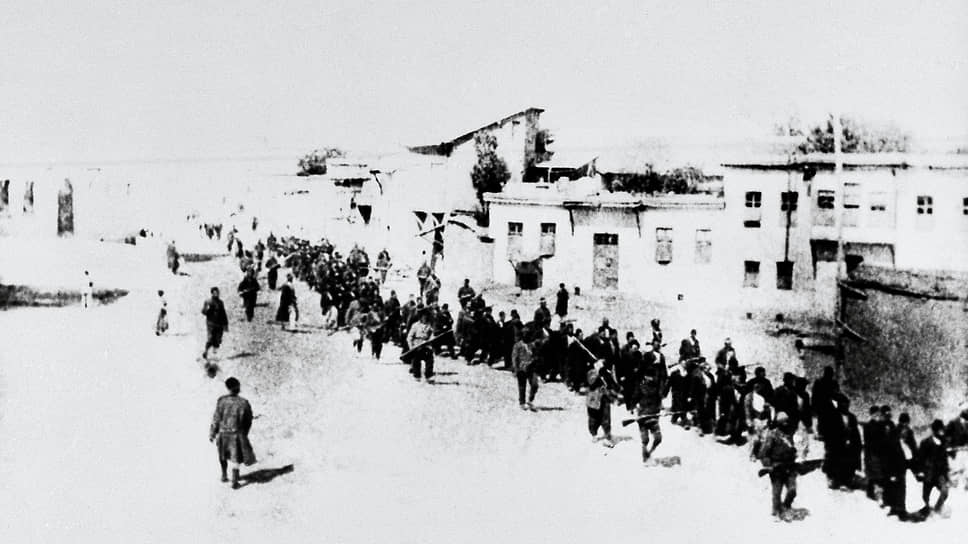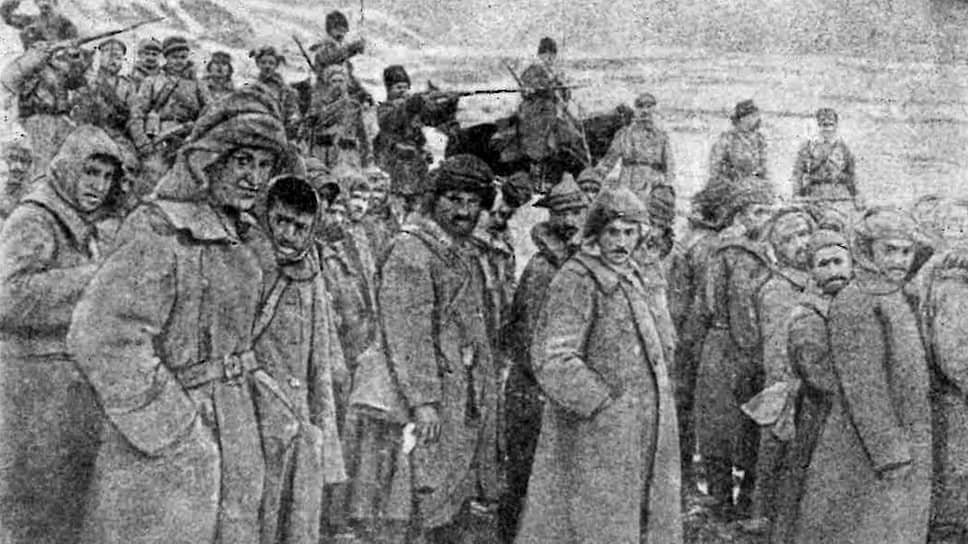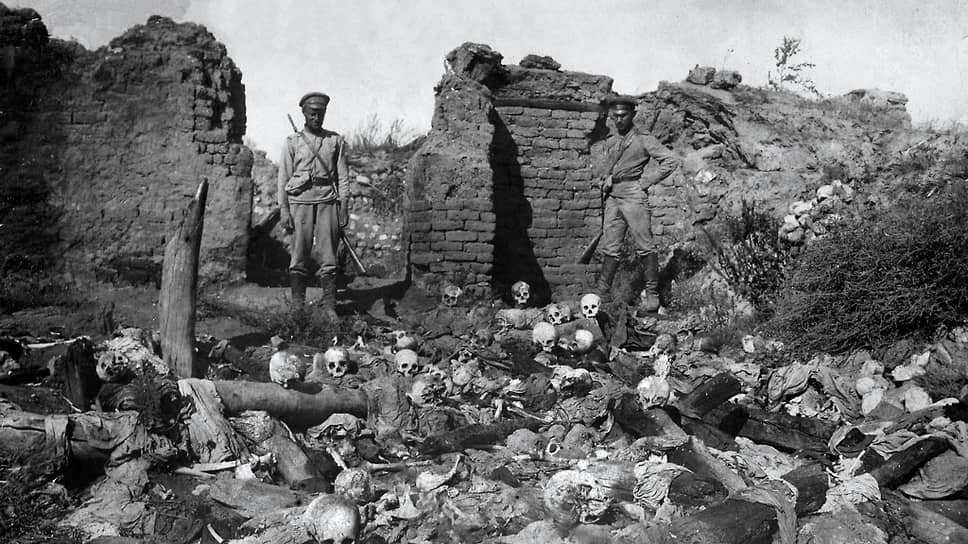
What Moscow knew about the actions of the Turkish authorities
April 24 is the Day of Remembrance of the Victims of the Armenian Genocide. The events in the Ottoman Empire, which began in 1915, still cause a lot of controversy and controversy. Therefore, the first published description of the tragedy and its results, made by a diplomat in northeastern Turkey, deserves special attention. Moreover, they represented Soviet Russia, which became an ally of the Kemalist government.
From the statistical essays on the Trapezond vilayet of the representative of the People’s Commissariat for Foreign Affairs of the RSFSR in Trapezond (Trebizond, Trabzon) K.N.Yusta, March 8, 1922.
(Yust prepared information about the situation in the region for the “Bulletins” of the press and information department of the People’s Commissariat for Foreign Affairs. “Statistical Essays” is a final document summarizing the collected information. In the same 1922 Yust was appointed consul in Batum, and in 1929 – the first secretary of the plenipotentiary USSR Representative Office in Turkey.)
Before the world imperialist war, Trapezond every year, compared with other Anatolian cities, flourished and increased …
At present, Trapezond, in comparison with the recent pre-war past, is experiencing a strong decline, which is most strikingly reflected in the economy. From the time of the outbreak of the war and up to the present day, all new construction and repairs to the old buildings and pavements in Trapezon have been discontinued. Most of the houses were dilapidated and destroyed. The populous Armenian quarter was burned out after the pogrom and now it is a heap of ruins overgrown with moss and weeds. The external picture is complemented by numerous ruins in the Degermen-Dere region (a suburb of Trapezonda), which were the result of the bombing of the city by the ships of the Russian fleet (on April 5, 1916, during the Trebizond operation, the city was taken by Russian troops, which were in it until March 1918. – “History” ).
Before the imperialist war, Trapezonde had up to 80,000 inhabitants. At present, the total number in the villages barely reaches 40,000. The rest was slaughtered (Armenians), forcibly withdrawn from the city (Greeks), and only a smaller part at one time voluntarily emigrated from Trapezond to the western regions of Anatolia, while advancing the tsarist troops to the city and settled in new places so as not to return to Trapezond again.
The picture of the general decline is most vividly revealed in the economic life of the region. Before the war, crafts, such as carpentry, goldsmithing and copper utensils, reached great perfection in Trapezon, so that their artistic handicrafts (chests of drawers, cigarette cases, samovars) were exported even to Europe (France, England).
As you know, before the war, with the most capital buildings, both in Trapezonde itself, and so on in the Caucasus, entrepreneurs used Trapezond construction workers (Greeks), who were reputed to be the most skillful and hardy. Thus, Trapezond construction workers were used in the construction of the Surami railway tunnel in Georgia. At present, there are almost no such masons in Trapezonde. Most of them were driven deep into Anatolia.
In past Bulletins, mention has been made of the current stagnation in Trapezond’s trade. Proof of this stagnation is the strong decrease in the number of local trading firms, as a result of which the import and export reaches a minimum.
The production of agricultural products also fell by half …
NOTE: Both these data and others appearing on the pages of these “Sketches” were borrowed by us from Anatolian newspapers, magazines (“Gench-Anatoli”), stories of local old-timers and our own verified observations …

“Immediately after their withdrawal, the authorities took possession of all their houses, workshops and shops.”
Photo: AP
As mentioned above, one of the reasons for the regression of the economic life of the region was the destruction of the Armenian population of the vilayet, which provided many workers, artisans, merchants and farmers from its midst.
It is necessary to recall how this event happened.
In summer 1915, by order of the government, under the pretext of resettling the Armenian population as “sympathetic to Russia”, away from the theater of military operations, a large party of Trapezond Armenians was taken out of the city. Now on the road almost all the men were killed, while the women, naked and hungry, were sent to the deserts of Mesopotamia, where they also perished for the most part.
The same was done with the Armenian peasants of the Trapezonian vilayet. They were sent in the same year in large parties under the supervision of gendarmes along the Erzurum highway, without belongings and without money, and they were ordered to leave all property in the villages. Immediately after their withdrawal, the authorities took possession of all their houses, workshops and shops and, taking what they needed, gave the rest to the plundering of the Turkish population. As a result, everything was removed from the Armenian houses, including the window panes, frames, doors and floorboards. After the looting, Armenian houses and even entire neighborhoods were set on fire and burned to the ground.
Withdrawn from their homes, the Armenian peasants near the city of Gumush-Khane were divided into two parts: men and women. The men were led to the Baldaban rock, where they were all killed and thrown into the abyss. The women were forced to move forward with blows of the whip, and the sick, old women and children, who could not keep up with the others, were killed and thrown among the roads. The next parties passed along the same road covered with corpses. Many went mad, others committed suicide by throwing themselves off a cliff. Gangs of Turkish peasants attacked those who remained, taking young and beautiful women with them.
When the procession, which had been reduced by more than half during the journey, arrived at the famous bridge over the Euphrates near the city of Aegin, then there were dozens of survivors thrown into the river. If anyone managed to swim ashore, they would kill him with a rifle shot.
The remaining minority was settled in the desolate and waterless Mesopotamian desert, where they died from hunger and disease.
In Trapezonde, graves and crypts with piles of skeletons of slaughtered and shot Armenians have been preserved in the ancient Greek cemetery even to this day. The vast piles of ruins located in the western part of Trapezond and which are the remains of the rich and numerous Armenian quarter of Trapezond also speak eloquently about the liquidation of Armenians.
All Armenians were destroyed (in Trapezonde and Vilayet alone): 8,000 urban population and 40,000 peasants.
Currently, not a single Armenian remains in the villages of the Trapezond vilayet. There are currently no more than 3,000 souls in the coastal Anatolian cities, of which one third are orphans, children living on the funds of the American Relief Committee in the Middle East in orphanages arranged by the Americans.
In particular, there are currently up to 500 Armenians in Trapezonde, of which 150 are children. Of these 500 people, only a tiny percentage belong to the former Trapezonian population. The majority are residents of dissimilar Anatolian cities, who had hidden during the massacre quite by accident with the Kurds and only recently settled in Trapezonde.
“There are graves and crypts with piles of skeletons of slaughtered and shot Armenians dumped in them.”
Photo: STR / AGMI / AFP
It should be noted that along with the national hatred inflated by the authorities, the reason for the “liquidation” of the Armenians was the economic enmity between enterprising Armenian merchants and artisans on the one hand and the already emerging and by that time weak and primitive Turkish bourgeoisie on the other. Before the pogrom, almost all the trading operations of Trapezond, and especially of the Vilayet village, were in fact in the hands of Armenians and Greek merchants and small traders. The handicraft industry was also in their hands. This circumstance aroused in the Turkish bourgeoisie a natural hatred for the more successful and enterprising brothers alien in spirit and religion, as a result of which the massacre took place.
The development of the Turkish bourgeoisie and its intolerant attitude towards rivals in the local market played a major role in the repressions of the authorities against the Anatolian Greeks (“Rums”) that began over the past two or three years …
These repressions, intensified since the capture of Eski-Shehir by the Greeks (in July 1921 during the second Greek-Turkish war of 1919-1922 – “History” ), did not, however, have the character of an Armenian massacre, partly due to the highly developed resistance of the Greeks ( countless rebel groups operating in Anatolia) …
There is no doubt that if the Angora government were not currently in such dependence on the benevolent attitude of Soviet Russia and Europe, then the Anatolian Greeks would have suffered the fate of the Armenians, perhaps even more difficult, since at present, the economic dependence of Turkish merchants from the more developed Greek bourgeoisie and the resulting rivalry, the fanned national hatred of the Greeks, with whom the Kemalists are now fighting for life and death for their very existence, joins even more strongly than in their time to the Armenians.
All men between the ages of 17 and 45-53 are resettled. The largest percentage of those resettled falls on artisans and small traders (not to mention, of course, the peasants), for the largest representatives of the Greek bourgeoisie manage, by giving bribes, either to escape from Trapezond (to Constantinople and the R.S.F.S.R.) ( Constantinople until October 1923 was occupied by the Entente troops. – “History” ), or, having ceased all trade activities, sit in houses. In addition, the so-called. “Russian subjects” Greeks (mostly the same bourgeoisie), as well as subjects of other European states (the latter – a small number). Despite, however, a number of obstacles, the repressions against the Greeks, even under the conditions described above, yielded a major result.
By February 1922, more than 2,000 Greeks were resettled inland from Trapezonde alone by the authorities. Authoritative sources report that up to 25,000 people have been evicted throughout the province of Greeks. It should be noted that only men were resettled, women were left in their places.
It is obvious that the resettlement from Trapezonde 2000, and from the vilayet – 25,000 healthy and enterprising population, consisting mostly of artisans, small traders, intellectuals and workers, should have affected the economic life of the area in the most disastrous way.

“In Turkish Muslim villages there is no family that would not have lost one or two of its members in the war” (pictured – Turkish soldiers in Russian captivity, 1915)
Photo: Photo archive of the Ogonyok magazine
Another of the main reasons for the decline in the economic life of the city and the vilayet is the general consequences of the world war, and before that – the African and Balkan wars, which Turkey has been waging incessantly for decades. These wars took away all both material and human resources of Turkey and led it to collapse. In addition to huge material values, these wars consumed a large number of the healthiest and strongest male population between the ages of 13 and 40. At present, there is no family in Turkish Muslim villages that would not lose one or two of its members in the war, and almost all adults and flourishing other members of which would not be in the army at this time.
The decrease in the number of a healthy Muslim population is not so noticeable in cities, because the Turkish bourgeoisie and intelligentsia, as in all capitalist countries, have the opportunity to free themselves from military service either by bribes or by any other means. But in the villages, the picture of a decrease in the most productive forces of the Muslim population is striking.
The decrease in the able-bodied population occurred for another reason, also associated with the imperialist war: it was the invasion of the vilayet by Russian troops. During the offensive of the Russian troops, the Muslim population of Trapezond and the vilayet, partly out of good will, out of fear of the conquerors of the Gentiles, and partly due to the coercion of the authorities, for the most part emigrated to the western regions of Anatolia. During the two-three-year stay of the tsarist troops in Trapezond, part of this emigrated population settled in new places and did not return to Trapezond after the evacuation of the Russians.
The vast majority of the refugees went west on foot without their belongings, taking with them only as much provisions and household utensils as they could carry. The houses of the departed were then plundered. Tobacco plantations and walnut orchards, left without care, have fallen into disrepair. Stores with goods were plundered.
In addition, Trapezonde and most of the entire wilayet experienced several movements on their territory by armies. At the beginning of the war, the vilayet strenuously supplied the Turkish troops stationed on the border with supplies. Then these detachments, when retreating, passed through it. After them Russian troops entered. In 1918, during the evacuation of Trapezonde, the decomposed mass of soldiers staged colossal robberies in the city and villages. Finally, through Trapezond, the Turkish army again marched to Batum.
As a result of repeated movements of huge military masses, the population of the city and especially the villages was incredibly impoverished. Agriculture is in a disastrous state. The peasantry, deprived of horses and livestock (multiple requisitions from both the Russians and the Turks), fell under intolerable economic bondage to the kulaks. To crown it all, a new war was declared with the Greeks. The economic collapse of the village began to intensify. As a result, the villages of the vilayet and the streets of the cities are overrun with beggars.
ATTENTION READERS
We See The World From All Sides and Want YOU To Be Fully InformedIn fact, intentional disinformation is a disgraceful scourge in media today. So to assuage any possible errant incorrect information posted herein, we strongly encourage you to seek corroboration from other non-VT sources before forming an educated opinion.
About VT - Policies & Disclosures - Comment Policy





There is no credible (complete) story of the armenian genocide without these photos :
https://i.pinimg.com/564x/e8/68/49/e86849c7658d2c6803a94d35d87132a2.jpg
http://www.genocide-museum.am/eng/children/08r.jpg
Wasn’t it President Washington who told US not to get involved in these foreign conflicts?
Who was loaning the money to finance these atrocities?
Comments are closed.